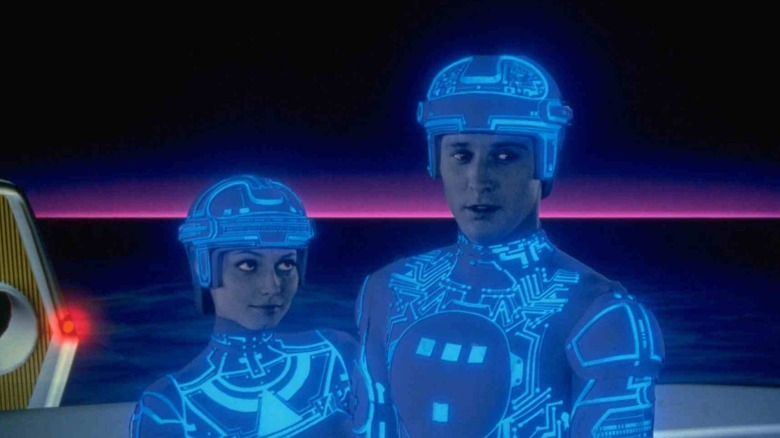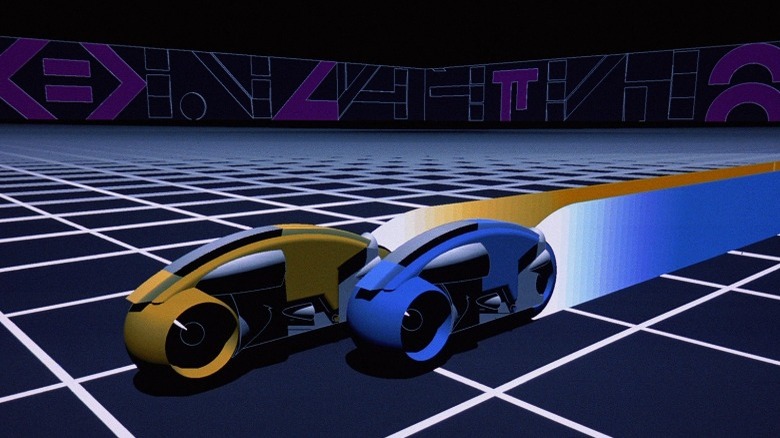Why TRON Was Disqualified From Being A Visual Effects Oscar Nominee
Computer-generated special effects may be the dominant visual force in cinema right now, but it took years for the medium to even get a foothold in the industry. Before films like "Terminator 2," "The Lord of the Rings" trilogy, and "Avatar" convinced Hollywood of the capabilities of CGI, black sheep like 1982's "Tron" had to endure the pushback that often accompanies leaps in new technology despite trailblazing a revolution within filmmaking. Although critics recognized "Tron" for its technical achievements, the film had a lukewarm box office performance and couldn't even get the satisfaction of an Oscar nomination for Visual Effects due to "cheating."
Only about 15 minutes of "Tron" was actually CGI, but in 1982 this was a daring leap (for comparison, the original 1978 theatrical version of "Star Wars: A New Hope" used about 40 seconds of CGI in the Death Star sequence, while "Terminator 2" had less than 5 minutes of CG footage when it released to resounding acclaim nine years later in 1991). The effects were a painstaking, laborious process, especially because computers couldn't create fluidly moving videos. Rather, the effects artists had to individually map out each frame digitally, paying careful attention to the coordinates of the moving images, and then manually piece them together frame-by-frame in a process that's similar to traditional cel animation.
Computers on computers
"Tron" may have arrived at too early a time for Hollywood to fully grasp what its team of visual effects artists were trying to accomplish. Even Disney, who produced the film, had its team working in parking lot trailers and not the offices of the Disney Animation Studios because, according to animator Chris Wedge, the company thought it was "computers just making effects" and not true animation. Director of the film's sequel "Tron: Legacy," Joseph Kosinski, expressed in a Comic-Con Q&A in 2010 that, "There's an interesting irony in the fact that the original 'Tron' was disqualified from the visual-effects category in the Academy Awards that year because they considered using a computer 'cheating' and that the film's technological achievements were ahead of their time."
The real irony is that most of the visual effects in "Tron" are classic in-camera techniques that the Academy was recognizing and rewarding for years. In a process called "backlit animation," also known as underlighting, artists physically drew and illuminated lines and patterns on individual negatives from footage shot on an all-black film set (this is, of course, a simplification of the intense process). The result created the famous neon world as well as the glowing suits that were, in fact, nominated for Best Costume Design. "Young Sherlock Holmes" in 1985 eventually did receive a nomination for its Pixar-made CG Knight animation, and James Cameron's "The Abyss" finally won CGI's first Visual Effects Oscar in 1989. Both have "Tron" to thank for their accolades.

